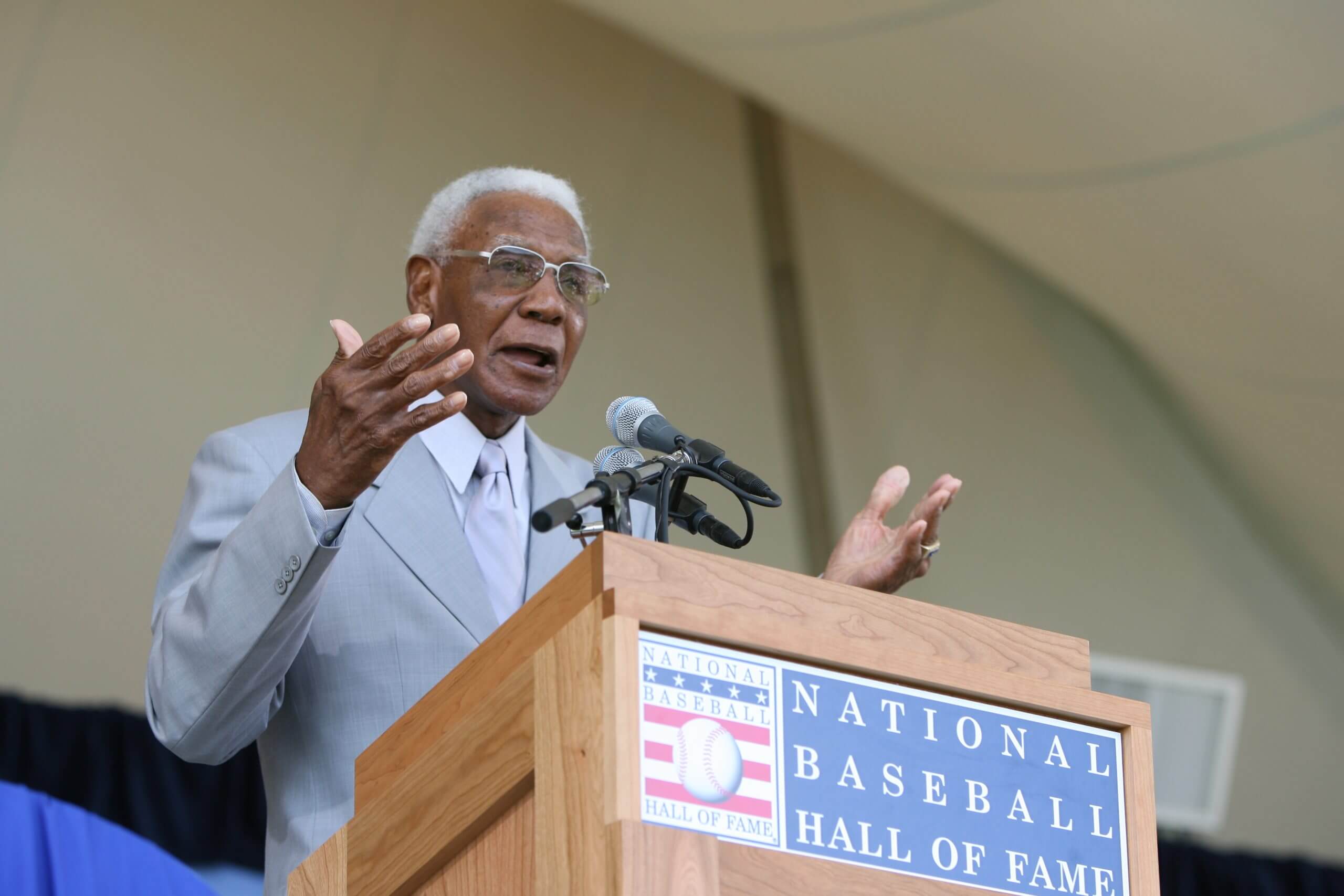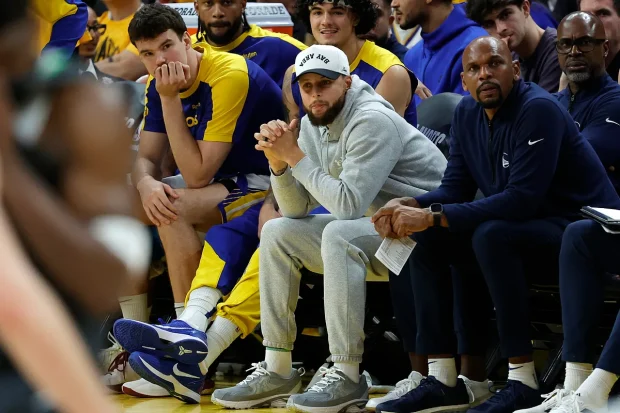
In 1990, Buck O’Neil founded the Negro Leagues Baseball Museum in Kansas City near 18th & Vine, a once-vibrant neighborhood synonymous with nightlife during the Jazz age.
The museum consisted of one tiny office.
O’Neil, a former first baseman for the Kansas City Monarchs and the first Black coach in MLB history for the Chicago Cubs, had a vision for a museum to keep the Negro Leagues stories alive. And he wanted to build it near 18th & Vine, an area that was once a thriving hub for Kansas City’s Black community and home to the Paseo YMCA, where in 1920 Rube Foster had formed the Negro National League.
Advertisement
O’Neil died in 2006, at 94, but his dream has endured. Today the president of the Negro Leagues museum is Bob Kendrick, O’Neil’s former right-hand man, who has become the museum’s chief storyteller and a national ambassador for Negro Leagues history.
If you’ve ever heard Kendrick tell a story, you’d understand why I wanted to talk to him. This time, I wanted to ask him about the leadership lessons he learned from O’Neil, one of baseball’s all-time personalities and a star of Ken Burns’ PBS documentary about baseball.
How did O’Neil rally people around a vision — in this case, a small baseball museum in the heartland? And what can we learn from the past?
I wondered if we could start with your favorite leadership lesson from the Negro Leagues.
I think the core story of the Negro Leagues is one built around leadership. You think about Rube Foster and his determination to build a league of his own. And it comes from a place where, “You won’t let me play with you, then we’ll create a league of our own.” To me, that is a great example of leadership because, No. 1, he had to convince seven other independent Black baseball team owners that, for Black baseball to not only survive but thrive, it needed an organized structure. And he had to convince them to give up their independence.
And he was able to do that on February 13, 1920, in that meeting that took place at the Paseo YMCA. So, for me, leadership is at the crux of this story. It is one of three pillars that make this story so amazing. No. 1, the importance of economic empowerment; No. 2, the incredible amount of leadership that emerged in these African-American communities through the formation of those leagues; and No. 3, obviously, the social advancement of America as Jackie (Robinson) was hand-picked from the Kansas City Monarchs to break baseball’s color barrier.
Advertisement
There’s a great symmetry in the idea of Rube Foster creating the Negro Leagues in 1920, and then Buck O’Neil building the Negro Leagues Baseball Museum 70 years later. What lessons can we take from the way Buck was able to create a vision for the museum?
You hear from the guys who played for Buck how amazing a manager he was. That he understood when to put his arm around you and when to kick you in your rump. I talk to people like George Altman, who played for Buck with the Monarchs, and then, of course, Buck brought him over to the Chicago Cubs. He still says today that Buck was the greatest manager that he ever played for. What Buck did in 1990: He was defiant from the standpoint that there were those who just did not believe that a museum would work at historic 18th & Vine. Buck stood steadfast in his belief that the origin of this history began in that area, and that he would build a museum there in that area.
I’m sure some of our most ardent supporters were questioning the decision, and I can understand why. Because there was no built-in foot traffic. There was nothing there that would indicate that a museum would be able to sustain itself. But as I oftentimes say, the infinite wisdom of Buck O’Neil said, “This is where we build it.” And in doing so, we will not only build a museum, we will help resurrect what was once a tremendously proud and prominent African-American community.
That was in 1990. And we haven’t looked back since.
How did Buck sell his vision?
Because he was a part of 18th & Vine when 18th & Vine was 18th & Vine. And he saw the potential that it could be restored, and that in many ways, our museum would do for that community what Negro Leagues baseball had done for urban communities across this country. Because wherever you had successful Black baseball, you typically had thriving Black economies. He understood that, and he was so passionate about it.
Buck could say the least, little thing, but he said it with such conviction that you had to come along with him. He was just steadfast in that belief, and people came along with him.
Advertisement
What did Buck teach you — not necessarily about Negro Leagues baseball — but about leading people?
I draw inspiration from Buck every single day. I say this oftentimes in jest, but there’s some truth to it: I talk to Buck almost every single day. Now, he doesn’t always talk back to me. But I talk to him almost every day. Because I still draw from the things he shared with me. There was so much wisdom he imparted. Now, he didn’t force it on you. It was there for you to consume if you wanted it. I tell people the smartest thing I ever did was I kept my mouth closed and I listened. And when you’ve got difficult decisions to make, when you’re trying to convince people to support these things, his ability to engage people is probably the thing that I’ve hoped I’ve picked up from him the most.

Buck O’Neil was an advocate for Negro League players and was posthumously inducted in the Baseball Hall of Fame in 2022. (Rich Pilling / MLB via Getty Images)
I read an old article where Buck was giving his tips for living a full life. And some of them were beautiful but kind of standard. He said, “Hug everybody you can.” “Drain the bitterness out of your heart”.” Sing a little every day … ”
“Listen to old people — they might teach you something.”
Yes, exactly. But one that I kind of smiled at, he said: “Do a little showboating now and again in your life. Remember, it was the so-so ballplayers who came up with the word, ‘showboating.’ They were jealous. If you have something to show, go ahead and showboat a little bit.”
(Laughs.) Go ahead and show it!
What do you think he meant by that?
I think that’s one of the reasons I often tell the story of when he and Ichiro Suzuki connected. They were kindred spirits. Because Ichiro would say he admired Buck’s style. Buck, I think, admired Ichiro because he knew exactly what Ichiro was going to go through when he decided to come to this country to play baseball.
Because, as you well know, as Ichiro goes into the Hall of Fame this summer, he left Japanese baseball with over 1,200 hits, yet when he was coming over to play in the major leagues, what did the naysayers say? “Well, you did that in your league. But you won’t be able to do that in our league.” Well, they said the same thing about the players from the Negro Leagues.
Buck would often say, “The major leaguers would accuse them of showboating.” And he would go on to say: “It’s only showboating when you can’t do it.” We know that today that the guy who homers and flips his bat, that’s a SportsCenter Top 10 highlight every night of the week. But the major leaguers frowned on it and would oftentimes say: “Well, they don’t play the game the right way.” Which was, in essence, a code word that said: “They didn’t play the game the white way.” And I think (Negro League players) knew that the game was entertainment. We’re slowly but surely understanding that today.
And Ichiro had a little bit of that flair, too.
Oh, he had it. There’s no question about it. He had it. And Buck saw that in him. The two of them just hit it off and connected in ways in which you would never expect that this Japanese ballplayer and this old Black man from the Negro Leagues would connect. When Buck died in 2006, Ichiro sent flowers. And the very next year, he came to visit me at the museum to pay respect to his friend, and he wrote a significant personal check to the museum in honor of his friend, Buck O’Neil.
Advertisement
It also kind of speaks to the idea that you never know who you might connect with if you give people a chance.
Exactly.
Another line Buck always said, and I think it was the title of his autobiography, but he liked to say, “I was right on time.” Obviously, he’s talking about his career and the obstacles in the era in which he played. But do you think there’s a bigger lesson in that?
I think Buck was always in the present. Even though he used his life as a way to help people understand the challenges and circumstances that others had to overcome. He also used his life as a beacon of light. When he talked about being right on time, I think that meant in every aspect of his life. From the baseball playing to the things that he was able to accomplish off the field. Buck rose to prominence after the Ken Burns documentary. He was in his 80s. The headline in the Kansas City Star said after his debut in the film: “A star is born at age 82.”
When he said he was right on time, I think he meant that every time that he said it, because he was always constantly present, even though he was so optimistic about the future, not only of our game, but of the future of this country.
You’ve been a steward and a national ambassador for the Negro Leagues Baseball Museum. I’m sure you didn’t think this was going to be your life when your career was just starting. I think there’s a lesson in there that people can find their calling and fall in love with what they’re doing.
I speak to a lot of students and I tell them, in 1993 when I was working at The Kansas City Star, I literally stumbled into what would become my passion when I walked into what was then the one-room office that was the Negro Leagues Baseball Museum. I had no idea it would become such an integral part of my life. But I fell in love with the museum, and I fell in love with the amazing story that it documented.
It shows the power of storytelling.
And to be authentic. These things are really important to this younger generation. And it’s what makes the Negro Leagues so prolific — the stories that we share. Buck was probably the greatest storyteller of all time, and I’ve tried to take the baton from him. People have continued to gravitate to these stories.
Is there a secret to finding that authenticity?
I think it becomes a part of who you are. Because, as a baseball fan, I was blown away by how little I knew about this history. I just wanted to learn as much as I could, and I didn’t want to keep it to myself. I wanted everyone else to feel the same way that I felt about it. And once I met those players like Buck, I was hooked like anyone else would be.
It’s such an honor to carry on for them.
(Illustration: Dan Goldfarb / The Athletic; Andy Kuno / San Francisco Giants / Getty Images)
This news was originally published on this post .










Be the first to leave a comment